|
..."Water, water everywhere" writes the poet Coleridge - and it seems he was right.
I introduced water in these articles in a calamitous combination of oxygen and hydrogen but that explosion was less than a gentle breeze compared to one place new water is formed. In 2011 evidence was uncovered of an amazing source of water. In the formation of new stars, a process we may explore to some level later. After the nuclear furnace in a baby star fires up there is a period of time during which the star spews out water at a rate of about the volume of the Amazon river every second. The duration of this flow is short compared to the life of the star but perhaps measured in centuries. Multiply that by the billions of stars and that is a lot of water. The image below illustrates the process.
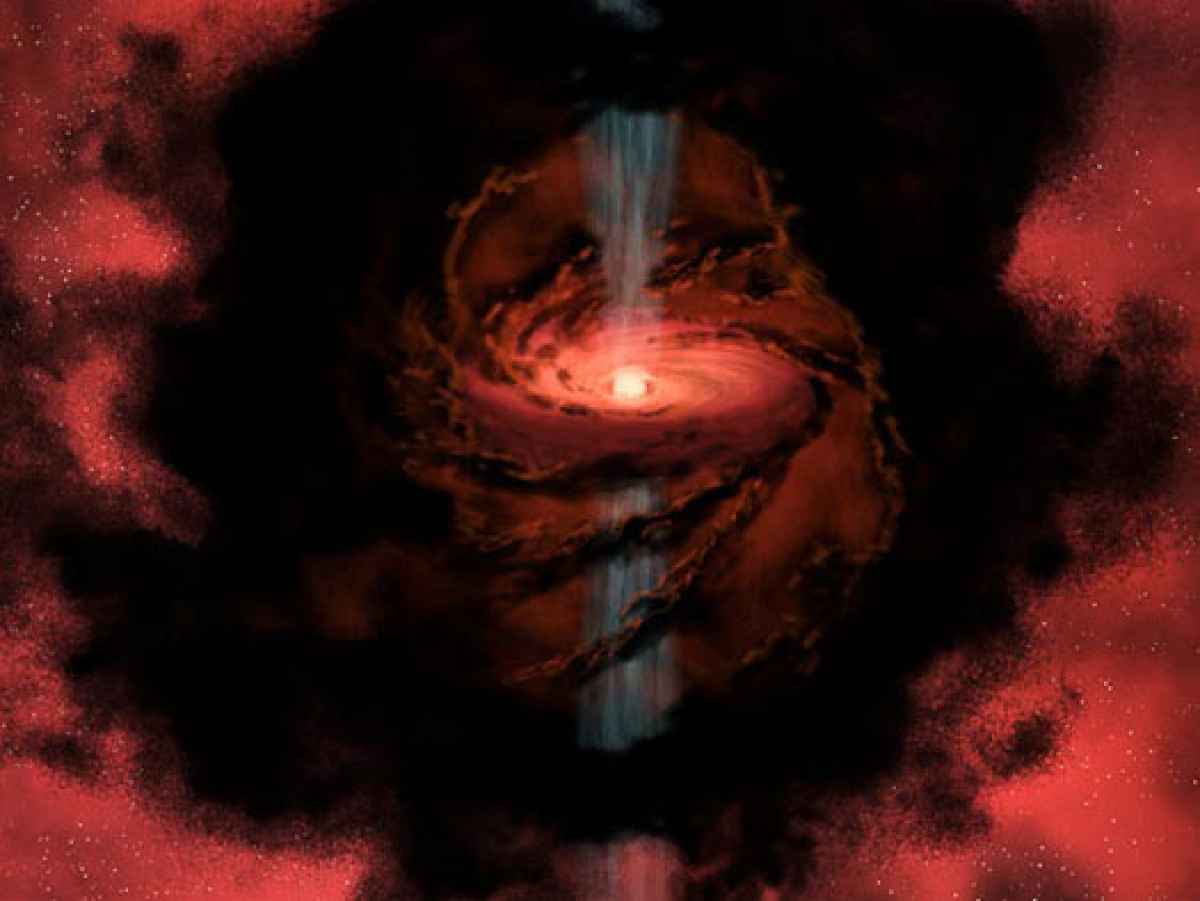
In 2014 researchers discovered that up to 50% of water on earth may have been formed before the birth of our sun, through a process, in the huge void of interstellar space, not known (to me anyway). The image below is a fanciful representation of this process.
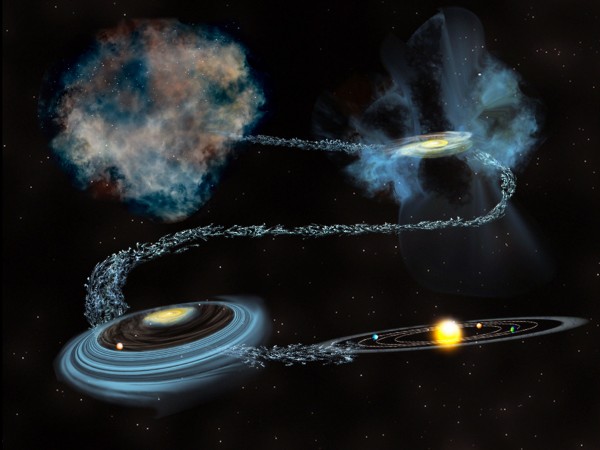
We know that a lot of water is knocking around in the solar system in comets as ice. It is looking like water may be even more widespread throughout the universe than was originally thought. Plentiful water is one of the prerequisites for life of the sort we humans know about. Finding it widespread in the universe may be a boost to the probability of extra-terrestrial life but that remains to be demonstrated.
We are more concerned with terrestrial water. Its most familiar form is the liquid that most of us drink every day. Imagine a dish of this water sitting on a stove with the heat turned off for now. It looks rather uninteresting sitting there with a perfectly flat surface. Lets apply some of the things we learned about water. The water molecules in liquid water, having some temperature above freezing, are zipping around at an average speed of about 580 meters per second. The average distance a molecule travels between collisions with other liquid water molecules is about 2.5e-10 meters/collisions so the number of collisions per second experienced by a molecule is about 580/2.5e-10 or 2.32e12 collisions/second. That gives some indication of the seething activity that is going on in that apparently quiet dish of water.
Remember that the water molecules attract one another so even with the frequent collisions, they rarely get vary far from each other. That is why at moderate temperatures water remains a liquid rather than a gas. The 580 meters per second number for speed is the average. Individual molecules will have much lower and much higher speeds. Some molecules at the high end of the speed range will break through the attraction for other molecules and escape from the surface of the water into the air near the water surface. That is why the water level in an uncovered dish goes down over time.
The gradual loss of liquid is called evaporation. Since it is mainly the faster molecules that escape, the average speed of the remaining molecules decreases, reducing the temperature of the remaining liquid. If the air over the water surface is undisturbed, some of the fast molecules are bounced from air molecules back into the liquid water. If the air over the surface is moving it sweeps away many of the fast molecules that might have bounced back into the water. This greatly increases the loss of fast molecules from the liquid and hastens cooling. Wipe the back of your hand with a wet cloth and blow on it to experience this cooling yourself.
If there were a cover on the dish of room temperature water we have been thinking about, the evaporated water molecules could not escape so some the get bounced back into the liquid water. Eventually the air space over the water gathers so much evaporated water that the number bounced back equals the number that leave the liquid and net evaporation stops.
Now letís light the flame under the dish of water. This increases the speed of the water molecules and eventually the fast ones begin to beat holes in the liquid which grow and collapse throughout the liquid volume.
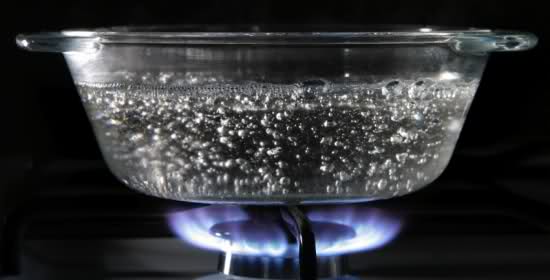
Some of these bubbles begin to rise to the surface and release high speed water vapor molecules into the air above the water, that beat the air molecules into a frenzy. In a covered pot these high speed air molecules pound on the sides of the pot and the cover, lifting the cover off the pot to let some of the hot air and water vapor into the cool air outside the dish. There the water vapor gives up some of its heat to the surrounding air and the attraction between the vapor molecules begins gathering molecules together into liquid water droplets that are big enough to become visible to us.
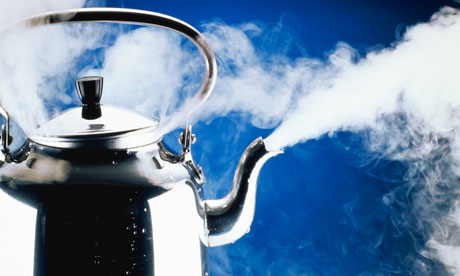
In the article on crystals I mentioned that water forms crystals when chilled. Take a look at the arrangement of water molecules in ice.
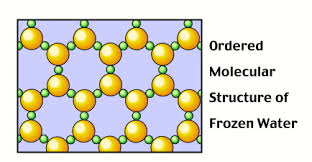
First of all it should be obvious from the image why snowflakes, which are large ice crystals, have six sided symmetry. Each cell of the ice crystal is six sided.
Notice all the wasted space in the center of each ring of six oxygen and six hydrogen atoms. This structure is why water expands when it freezes so ice floats on water. Lucky for us that it does, otherwise ice might form at the bottom of ponds and lakes instead of the top. A layer of ice on the bottom might have prevented the development of aquatic life that now contributes to the food chain.
There is a detrimental impact of the expansion of water as it freezes. Water infiltrates the paved surfaces or roadways and when it freezes the expansion breaks up the structure of the pavement. The state of Pennsylvania has about 40,000 miles of paved roads in October but it seems like by the end of March those miles have grown considerably, what with the vehicles having to descend into the potholes and climb out again.
Water has some more tricks that we could explore but it is time to move on to other common events we observe. A while back I suggested that hitting a ball with a bat seemed to be a highly unlikely event. Next we will explore that issue.
|




